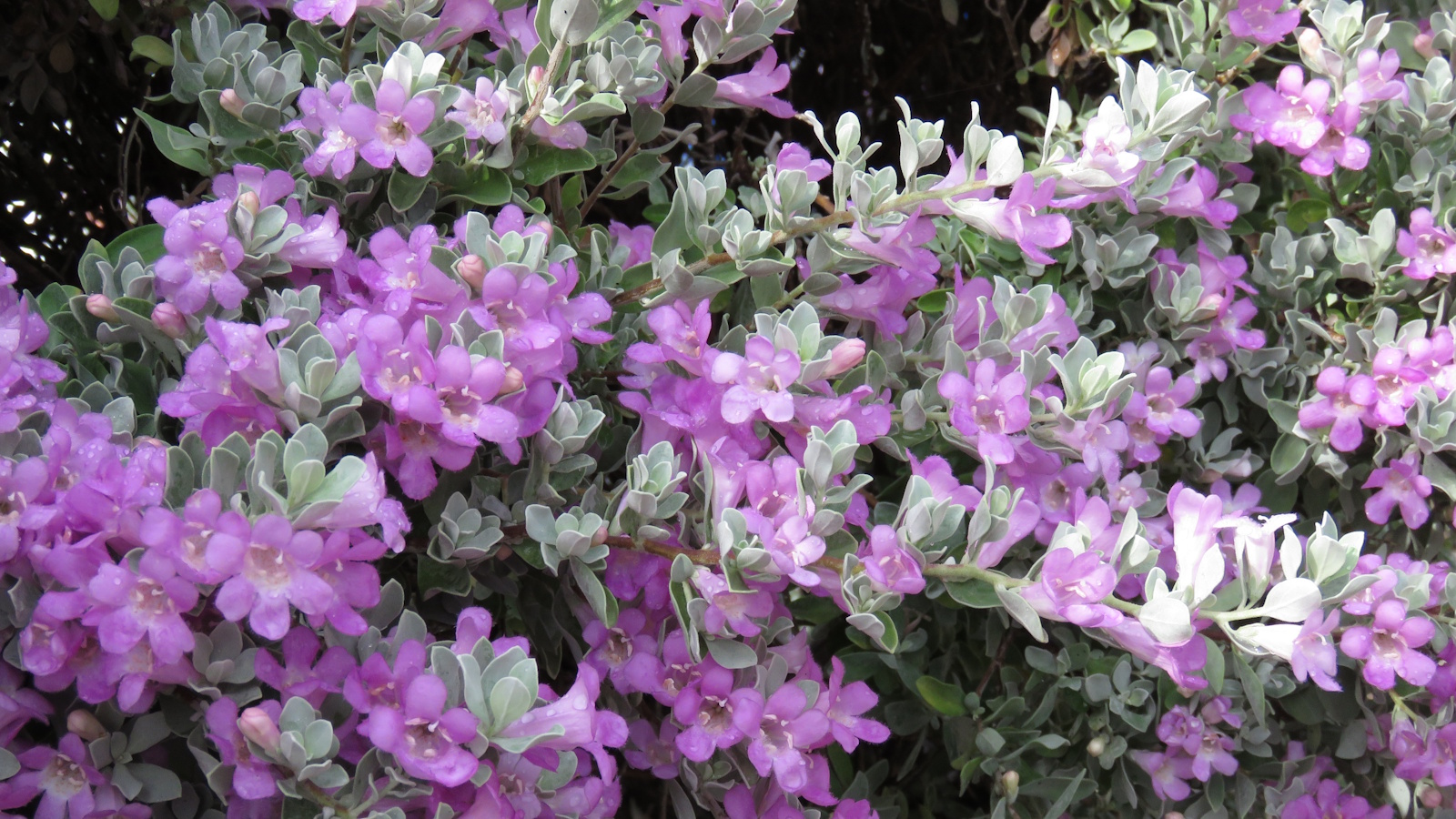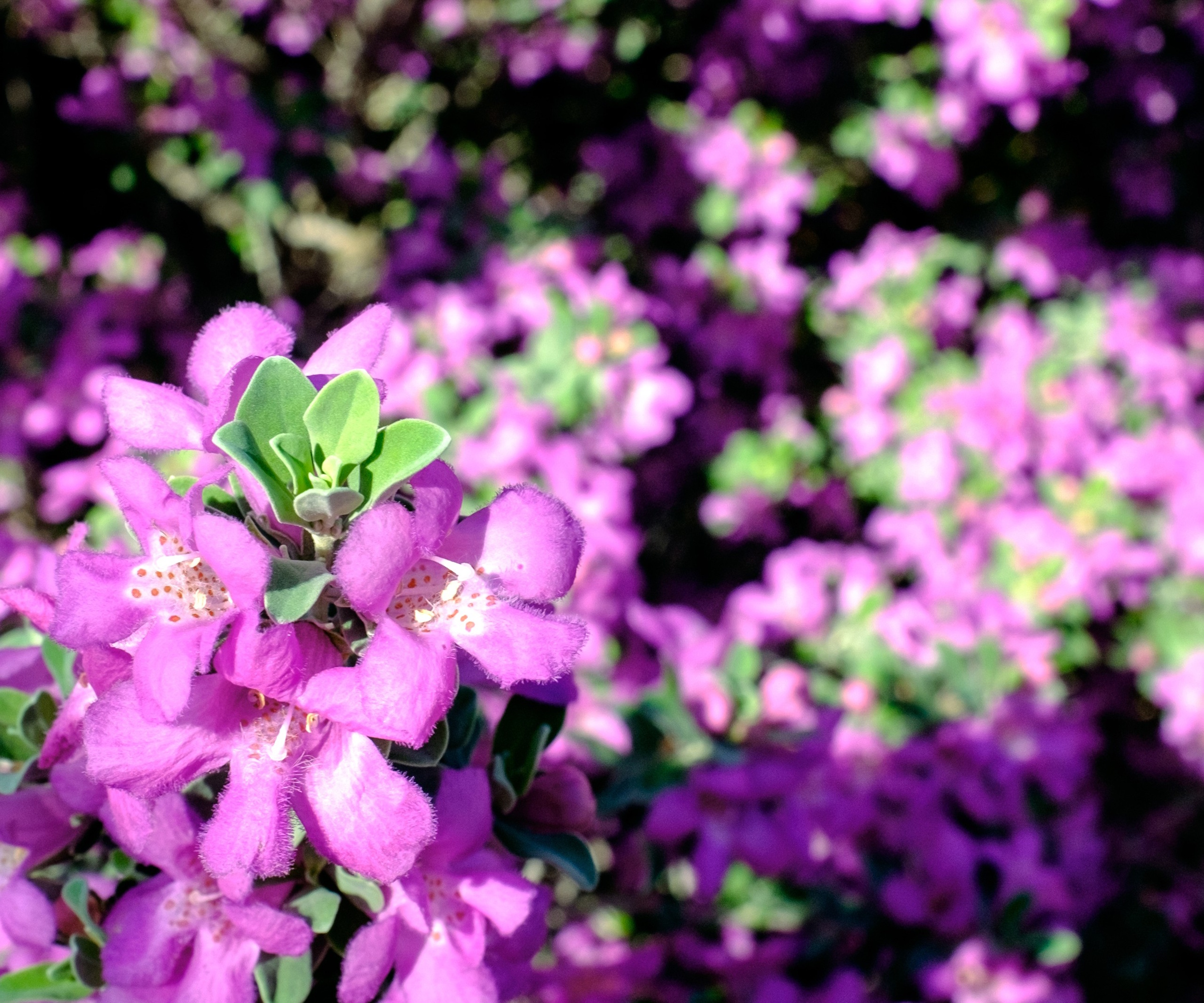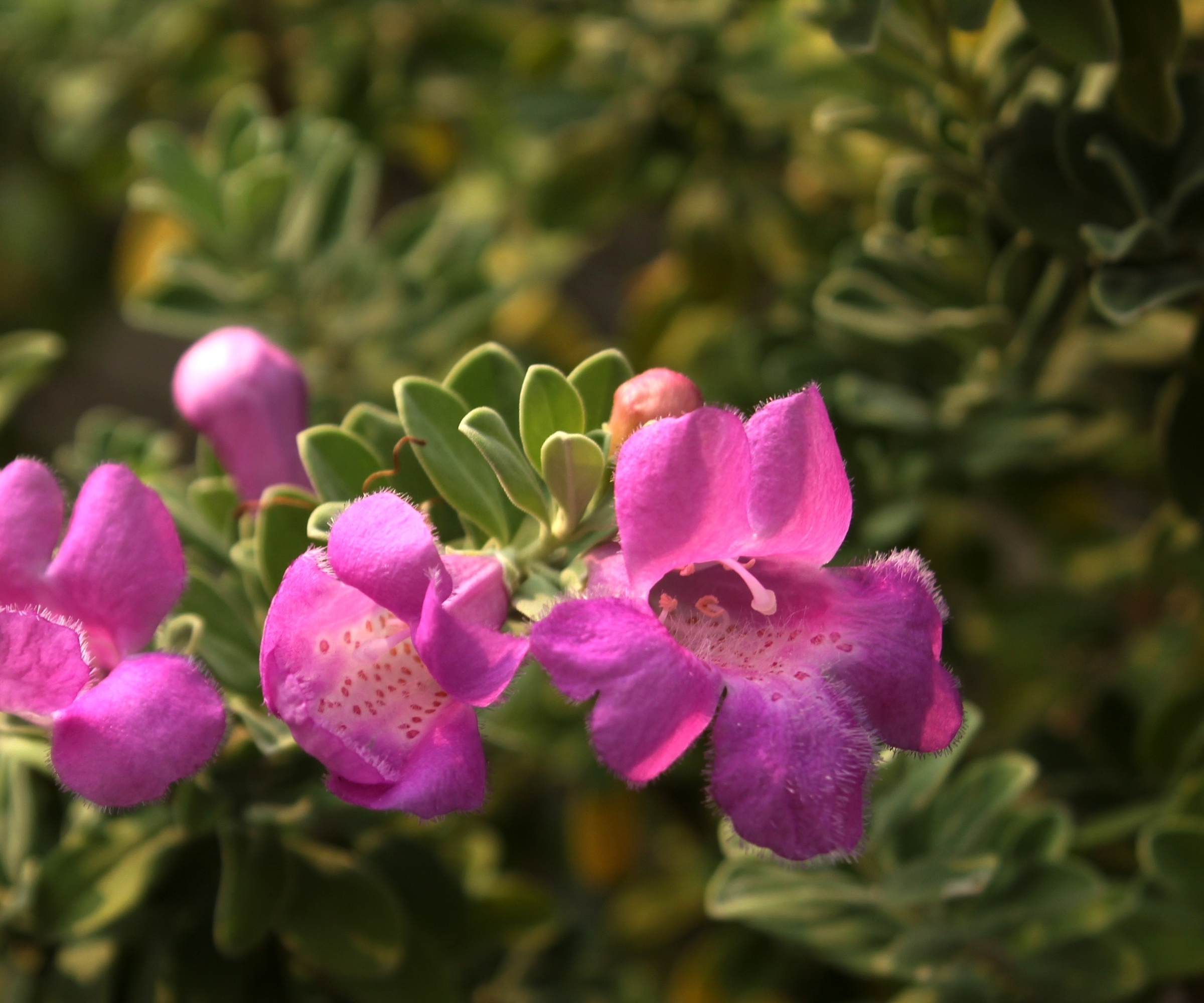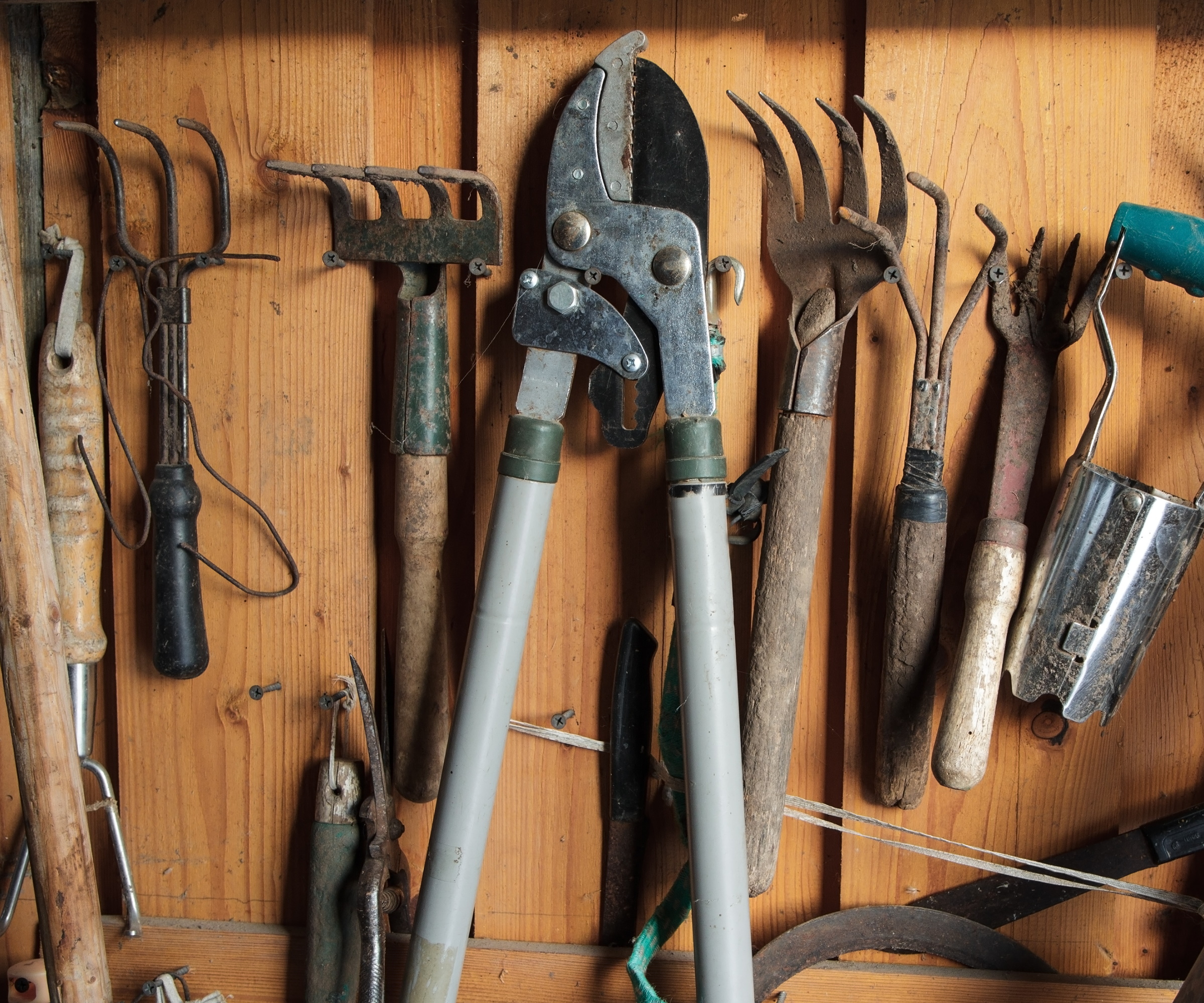How to grow Texas sage – for a native evergreen shrub with pretty pink blooms
With silver foliage and masses of flowers, this unusual native shrub will add something different to your borders


With silver-green foliage and dazzling purple-pink blooms, Texas sage is a shrub that demands attention. This North American plant is known as the 'State Native Shrub of Texas', seen growing in front and backyards, along verges and lining the roadside across The Lone Star State.
As you might be able to tell from its native environment in Texas, Arizona and Mexico, this shrub is tough and resilient in warm, southern climates and desert-like terrains. The silver-green foliage is an adaptation, allowing this plant to tolerate searing sun for most of the day.
Evergreen in warmer climates, Texas sage, Leucophyllum frutescens, is a good option if you are seeking an unusual specimen shrub or a flowering hedge plant that will maintain year-round interest in the yard. So, if you are looking for inspiration or considering landscaping with shrubs, we have got you covered. Here, one garden expert reveals all you need to know about these native plants.

How to grow Texas sage
Texas sage is a durable, sun-worshipping plant that can handle heat and drought. With many of us struggling to keep plants happy during long, dry summers, opting for native flowering shrubs for full sun or desert plants that are easy to care for is a good idea.
Things to know about Texas sage

Despite its name, Texas sage is not a true sage (commonly known as salvia). Instead, Texas sage belongs to the Scrophularia plant family, otherwise known as figworts. Plants belonging to the figwort genus are found across the Northern Hemisphere, identifiable for their square stems, opposite leaves and two-lipped flowers.
'Texas Sage is an impressive flowering plant found across many states,' says plant expert, Katie Sunderlage. 'Hardy from US hardiness zone 8 to zone 11, Texas sage will tolerate temperatures down to 12ºF/-11ºC.
'Texas sage loves heat and sunshine,' although for those in US hardiness zone 10 or tropical zones, such as southern Florida, a 'little shade will be tolerated.'
Design expertise in your inbox – from inspiring decorating ideas and beautiful celebrity homes to practical gardening advice and shopping round-ups.
This medium-sized shrub tends to reach six to eight feet tall and wide at maturity, although it can be easily kept in check and responds well to pruning, making it a good option as a hedge plant that will provide a little more interest than the usual hedging options. As can be seen in the images here, the neon-pink blooms will stand out in even crowded backyard borders and pots, pairing nicely with white, pink and purple flowering plants.
Texas sage starter plants are available from Walmart.

Operations Manager at Holland Group, managing the customer service department and purchasing. Katie has been in the green industry since 2005 in the Greater Milwaukee area, earning her degree in Horticulture in 2008. She has been able to share her love for plants working in multiple garden centers, in sales positions and most recently in an online retail platform at Holland Group.
Growing advice for Texas sage

- Soil: 'Texas sage does well in most types of soil,' Katie says, including rocky and poor soils. 'However, they grow best in well-drained soil with neutral to slightly alkaline pH, approximately from 7.0 - 8.0. If your soil is more acidic, lime can be added to lower the pH.' Organic garden lime is available to order online from Walmart.
- Light: As plants with silver foliage, you may have discerned that Texas sage needs plenty of sunshine to thrive. 'This shrub grows best in full sun but can tolerate some shade,' Katie says. 'Generally, I recommend a minimum of six to seven hours of sunlight each day for the best results.'
- Watering: As a drought-tolerant plant, Texas sage will thrive in dry and arid environments once established. These plants grow well across Texas, Nevada and Florida, where the summers are long and can be dry, so adding one to your plot can help to conserve water in the coming years. Importantly, always give newly planted shrubs a regular deep watering during the first year to help them settle into your yard.
- Fertilizing: 'Texas sage generally doesn’t need much fertilizer once established,' Katie says. 'If fertilizer is used, it’s recommended to apply a slow-release general tree and shrub fertilizer in late winter or very early spring.' Consider using shrub fertilizer spikes, available from Amazon, to keep your plants in good health. Simply insert one fertilizer spike 10 to 15 inches away from the base of your plant.
- Pruning: 'Pruning out dead or damaged stems should be done during the winter months or very early spring while the plant is still dormant,' Katie says. 'Texas sage doesn’t necessarily need regular pruning but does tolerate annual trimming. This can help to keep a uniform shape which is needed for hedging.'
- Toxicity: It is not considered toxic or harmful to humans or pets.
FAQs
Can I grow Texas sage in a pot?
Yes, Texas sage can grow successfully in pots. 'If you opt to grow in pots, it’s important to use a container with good drainage and provide high-quality potting soil,' Katie advises. 'The pot should be placed in full or dappled sunlight. Watering will likely be needed more often in a pot, usually once or twice per week depending on rainfall.
Keep an eye on watering in the summer, letting the soil dry out between soakings as overly moist soil will cause harm to your plant.' Fertilizing in pots is also more important as nutrients in potting soil can leach out very quickly. Use a well-balanced 10-10-10 slow-release fertilizer.
Why is my Texas sage plant woody, with leaves and blooms on the end of leggy stems?
Over time, plants can develop leggy growth which can be unsightly. Consider pruning once per year to keep your shrub compact with full, bushy growth. Texas sage responds well to pruning, so give your plant a good trim in early spring. Alternatively, ensure that your plant is in the right position in the yard. Leggy growth can be a sign that your plant is not getting enough light, and this growing habit is a sign it is searching for light.
Pollinators love the flowers of native planting, including Texas sage. Consider growing this shrub alongside other native species that are known to attract butterflies, birds and bees, such as coneflowers, black-eyed Susans or lantana bushes. Non-natives such as phlomis, lychnis or stachys are also good drought-tolerant plants to use, with silver foliage and brightly colored blooms that will add impact to your yard.

Thomas is a Content Editor within the Gardens Team at Homes and Gardens. He has worked as a professional gardener for both public spaces and private estates, specializing in productive gardening, growing food and flowers. Trained in Horticulture at the Garden Museum, he has written on gardening and garden history for various publications, including The English Garden, Gardens Illustrated, Hortus, The London Gardener and Bloom. He has co-authored a Lonely Planet travel book, The Tree Atlas, due out in 2024.